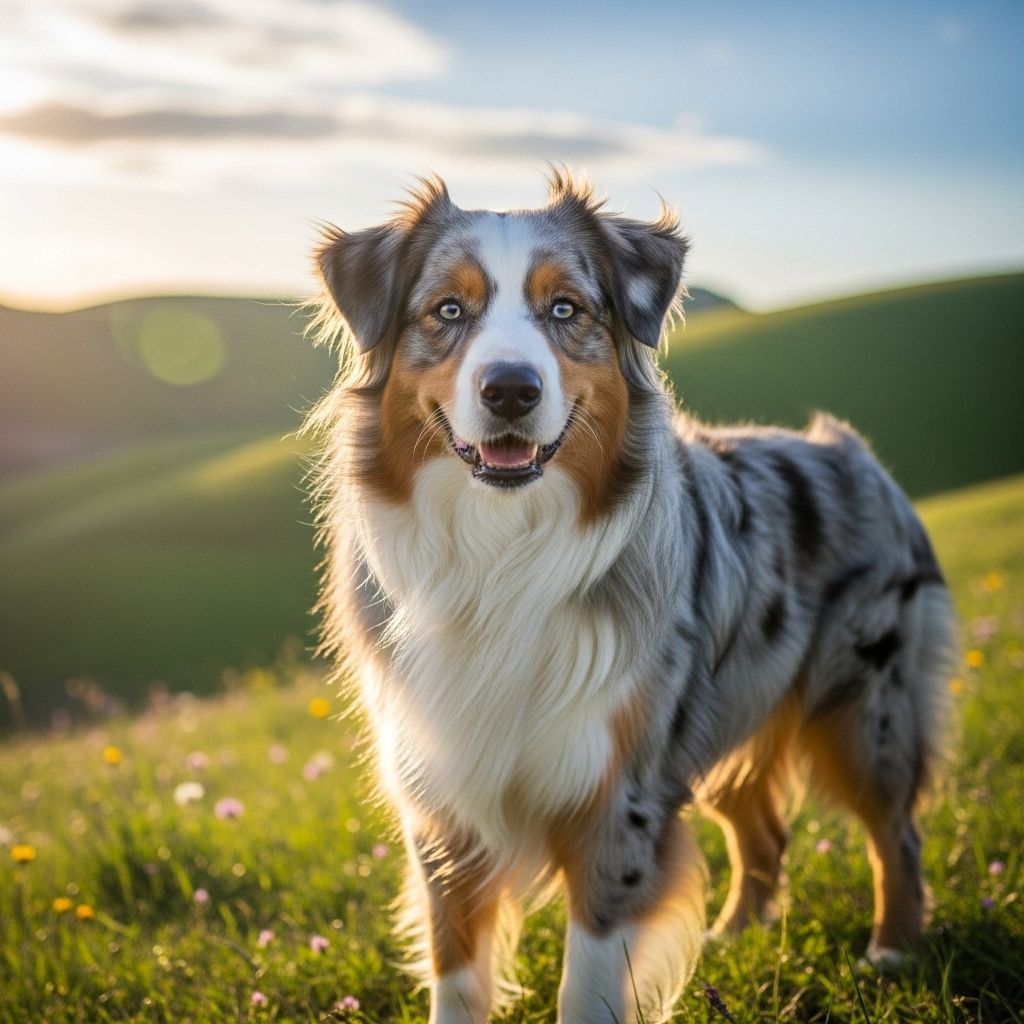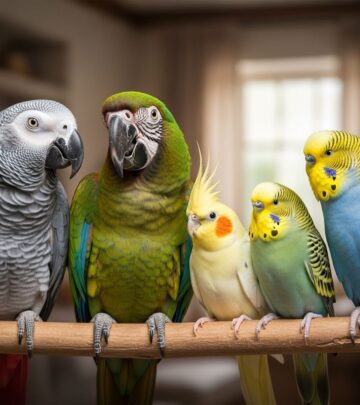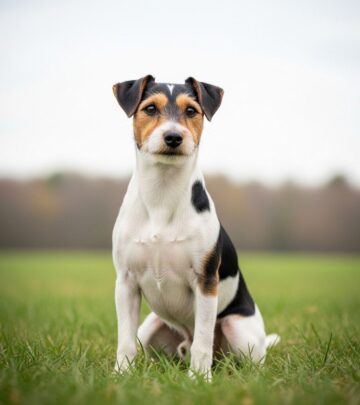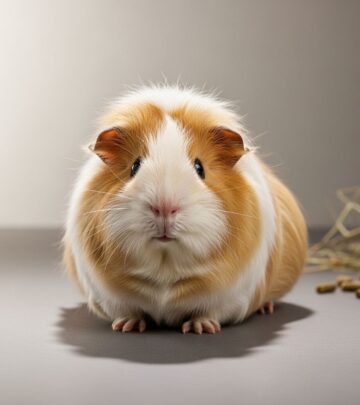Australian Shepherd Dog Breed Essential Profile And Care Guide
Energetic and intelligent companions thriving with active families and loving homes.

Image: HearthJunction Design Team
Australian Shepherd: Complete Breed Profile, Traits, and Care Guide
The Australian Shepherd, affectionately known as the “Aussie,” is a vibrant, high-energy breed celebrated for its intelligence, working ability, and strong devotion to family. This comprehensive guide covers everything you need to know about Australian Shepherds, from their fascinating history to their care requirements, temperament, health, and much more.
Breed Overview
- Breed Group: Herding
- Height: 18–23 inches at the shoulder (males: 20–23 inches; females: 18–21 inches)
- Weight: 35–70 pounds (males generally heavier)
- Life Expectancy: 12–15 years
- Coat: Medium length, double coat, wavy or straight
- Colors: Blue merle, red merle, solid black, solid red (with or without white markings or tan points)
- Activity Level: Very high
History and Origin
Despite its name, the Australian Shepherd is an American breed with roots traced back to the Basque region of Spain. Basque shepherds, along with their herding dogs, traveled to Australia in the 19th century before immigrating to the western United States. American ranchers admired these dogs’ herding prowess and mistakenly associated their origin with Australia—thus the name “Australian Shepherd.” These adaptable dogs quickly grew in popularity among cowboys and livestock handlers for their intuition, stamina, and work ethic.
Physical Characteristics
- Size: Aussies are medium-sized dogs, standing 18–23 inches tall and weighing 35–70 pounds depending on gender and genetics. Males are generally taller and heavier than females.
- Body: Their bodies are athletic, sturdy, and slightly longer than tall, built for agility and endurance.
- Coat & Color: The Australian Shepherd’s double coat is moderately long with a dense undercoat and coarse outer layer. Their coats come in a variety of patterns and color combinations, including blue merle, red merle, black, and red, sometimes featuring striking white and tan markings.
- Tail: Aussies can have naturally bobbed tails, long tails, or partial bobs. Traditionally, tails were docked in the U.S., though natural tails are seen in countries where docking is restricted.
- Eyes: One of the breed’s most captivating features is its eyes, which may be brown, blue, amber, or even two different colors (heterochromia).
Australian Shepherd Appearance Table
| Characteristic | Details |
|---|---|
| Height | Males: 20–23 in; Females: 18–21 in |
| Weight | 35–70 lbs |
| Coat | Medium length, double, wavy or straight |
| Colors | Blue merle, red merle, black, red (with/without white or tan) |
| Eyes | Brown, blue, amber, or heterochromia |
| Tail | Bobbed, long, or partial |
Personality and Temperament
Australian Shepherds are celebrated for their intelligence, energy, and loyalty. These dogs form deep bonds with their families and are known to be affectionate, alert, and protective. Their sociable and enthusiastic personalities make them excellent companions for active adults, families with children, and individuals who enjoy outdoor activities.
- Intelligent and Trainable: Aussies are among the smartest dog breeds, excelling in obedience, agility, and advanced canine sports.
- Energetic and Playful: They have high energy levels and require significant daily exercise and mental challenges to prevent boredom-related behaviors.
- Work-Oriented: Bred as herders, Aussies thrive when given a job—be it herding, fetching, agility training, or other structured activities.
- Protective Instincts: Aussies can be wary of strangers and make effective watchdogs, though early socialization is essential to foster friendliness and confidence.
- Herding Instinct: Owners should be aware that some Aussies may attempt to herd household children or pets. Training and gentle redirection help manage this instinct.
Personality Profile Table
| Trait | Rating | Notes |
|---|---|---|
| Affection Level | Medium-High | Strong bonds with family |
| Kid-Friendly | High | Great with children, supervision recommended |
| Pet-Friendly | Medium | May try to herd other pets |
| Energy Level | Very High | Needs daily vigorous activity |
| Trainability | High | Quick learners, enjoy tasks |
| Intelligence | Very High | Thrives on mental stimulation |
| Tendency to Bark | Medium | Alert and vocal |
| Shedding | Medium | Seasonal; regular brushing helps |
Living with an Australian Shepherd
Australian Shepherds excel in homes where they can actively participate in their family’s day-to-day life. Due to their high energy and need for engagement, they are best suited for owners who can provide both physical and mental challenges consistently.
- Space: While they can adapt to various living environments, Aussies thrive with access to a yard or safe open space.
- Family Life: Aussies make loyal and playful family members, particularly in active homes with opportunities for hiking, running, or canine sports.
- Companionship: These dogs crave human interaction and do best when not left alone for extended periods.
- Other Pets: Aussies often coexist well with other animals, especially when raised together. Early socialization is essential to minimize herding or chasing behaviors.
Exercise and Activity Needs
Australian Shepherds are among the most energetic dog breeds. Without enough exercise, they may become restless or destructive.
- Daily Physical Exercise: At least 1–2 hours of vigorous exercise per day is recommended. Activities can include long walks, runs, playing fetch, and agility courses.
- Mental Stimulation: Aussies need daily brain challenges—puzzle toys, obedience training, and interactive games to exercise their problem-solving skills.
- Structured Training: Aussies excel in dog sports such as flyball, herding trials, scent work, and advanced obedience.
- Hiking and Outdoor Activities: Their stamina and endurance make them ideal companions for hiking, camping, and other adventures.
Grooming and Care
Australian Shepherds have a moderate grooming requirement, primarily due to their double coats.
- Brushing: Brush the coat 2–3 times a week to reduce tangles, matting, and manage seasonal shedding.
- Bathing: Occasional baths—every 6–8 weeks or as needed—will help keep their coat healthy.
- Ears & Nails: Regularly check and clean the ears for signs of infection, and trim the nails every few weeks to prevent overgrowth.
- Dental Care: Routine teeth brushing is recommended to maintain oral health.
Diet and Nutrition
Like any active breed, Australian Shepherds require a balanced, high-quality diet tailored to their size, age, and activity level. Consult your veterinarian for the best food recommendations, portion sizes, and feeding schedules. Provide access to fresh water at all times, and monitor treats to avoid excess weight gain.
Training and Socialization
- Positive Reinforcement: Use reward-based techniques—praise, treats, and play—to motivate training and reinforce good behavior.
- Early Socialization: Expose your Aussie to various people, animals, environments, and experiences starting at a young age to foster confidence and sociability.
- Obedience: Consistent training is essential for managing the breed’s energy and preventing undesirable behaviors, such as herding or nipping.
- Advanced Training: Aussies excel in advanced commands, trick training, and dog sports that challenge their intelligence and athleticism.
- Consistency: Be firm but gentle, setting clear boundaries and maintaining consistent routines for best results.
Common Health Concerns
Australian Shepherds are generally healthy, but like all breeds, they can be prone to certain genetic conditions. Responsible breeding and routine vet care minimize health risks.
- Hip Dysplasia: A hereditary condition that can lead to joint discomfort or arthritis.
- Elbow Dysplasia: Another hereditary joint disease that affects the elbows and can cause lameness.
- Epilepsy: Some Aussies may develop seizures, often managed with medication.
- Progressive Retinal Atrophy (PRA): A degenerative eye condition that can lead to blindness.
- Cataracts: Clouding of the eye lens, potentially impairing vision.
- Collie Eye Anomaly (CEA): A genetic disease affecting the eyes, sometimes resulting in vision loss.
- Deafness: Particularly associated with merle-to-merle breeding. Responsible breeders screen for this condition.
Routine veterinary checkups, a healthy diet, daily exercise, and preventative care are fundamental to keeping your Aussie thriving.
Is the Australian Shepherd Right for You?
The Australian Shepherd is ideal for households seeking an energetic, interactive companion that thrives on activity and learning. Consider an Aussie if you:
- Enjoy outdoor activities and frequent exercise
- Have the time and willingness to dedicate to daily training and play
- Prefer a loyal, protective, and intelligent family dog
- Can provide ample space and mental challenges
This breed may not be suitable for first-time owners, people with limited time, or those looking for a calm, low-maintenance pet.
Australian Shepherd FAQs
Are Australian Shepherds good with children?
Yes, Aussies are generally great with children due to their playful and affectionate nature. Supervision is recommended, particularly with younger kids, as the herding instinct may prompt nipping at heels during play.
How much exercise does an Australian Shepherd require?
Aussies need a minimum of 1–2 hours of vigorous daily exercise, plus mental stimulation. Without adequate activity, they can develop destructive behaviors.
Do Australian Shepherds shed a lot?
Australian Shepherds are moderate shedders. They shed year-round, with increased shedding during seasonal coat changes. Regular brushing helps keep shedding under control.
Are Australian Shepherds easy to train?
Yes, their intelligence and eagerness make them highly trainable. They excel in obedience, agility, herding, and other canine sports.
Can Australian Shepherds live in apartments?
While possible, Aussies thrive in homes with a yard or access to open spaces. Apartment living can work with dedicated exercise routines and sufficient mental engagement.
Are Australian Shepherds prone to health issues?
They are generally healthy but can be at risk for certain genetic conditions, such as hip dysplasia, epilepsy, and eye issues. Responsible breeders screen for these problems.
Do Australian Shepherds get along with other pets?
Often yes, especially if socialized early. Some may try to herd other pets, so training and supervised introductions are helpful.
Conclusion
The Australian Shepherd is a lively, loyal, and versatile breed, offering boundless affection, intelligence, and companionship. Their robust energy and herding instincts are best matched by owners ready to embrace an active, engaging lifestyle. If you seek a devoted partner for work or play, the Australian Shepherd stands ready to join your pack.
References
Read full bio of Anjali Sayee












